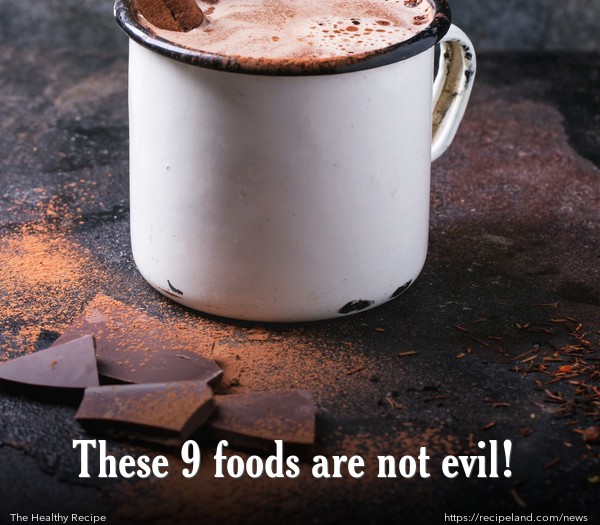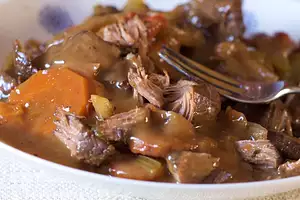Here is a list of nine foods that are often maligned, but shouldn’t necessarily be.
1. Whole eggs
Eggs are a great choice for those on a healthy diet. Don’t feel bad about eating the entire egg, yolk and all. Tanya Zuckerbrot, M.S., R.D., author and founder of F-Factor Nutrition, a private nutrition counselling practice in New York City, explains that eggs provide plenty of excellent nutrition benefits, including choline, which is critical for healthy cell function, and many antioxidants (especially lutein and zeaxanthin), that help decrease the risk of developing cataracts and other age-related problems like macular degeneration (a leading cause of blindness).
Eggs also have a high amount of protein for the calories, and amino acids that you need. The cholesterol that is in eggs can help raise your good cholesterol levels, and not increase the bad levels. So eat them regularly for good health!
2. Whole milk
Until you heard that whole milk caused heart disease, you were able to enjoy this. This is the milk we feed our babies, and it contains plenty of great vitamins and nutrients. Switching to reduced-fat versions or even non-dairy options reduces these nutrients.
Unless you have a sensitivity or allergy, the 8 grams of protein, calcium, and vitamin D far outweighs the amounts available in other options like rice, almond, or coconut milk. Alissa Rumsey, R.D., spokesperson for the Academy of Nutrition and Dietetics, explains that while whole milk does contain fat and more calories, “this isn’t necessarily a bad thing.”
The fat will help you feel satisfied longer, and help you avoid cravings for unhealthy choices. Be sure to stick to a single serving size to keep calories controlled, but whole milk is not a problem in general.
3. Bread
Yes, you should continue to avoid processed white bread. But, if you are going to opt for 100% whole grain varieties, then you can enjoy them guilt free. There are many nutritional advantages that can help keep systems in check.
Rumsey states, “Whole grain carbs better regulate blood sugar and are linked to a reduced risk of diabetes, heart disease, and certain cancers.”
Make sure that you are reading the labels very carefully, tricky marketing strategies may lead you to believe you are getting whole grain varieties when they still contain mainly refined grains. Look for the first ingredient to be whole grain flour, or 100% whole wheat flour to be sure.
4. White potatoes
Potatoes do have a high carb content, but as long as you are not enjoying your potatoes in French-fried forms or potato chip versions, you can incorporate them into your healthy diet.
A baked potato contains only about 160 calories, and has tons of vitamin C, vitamin B, potassium, and fibre. They also have plenty of resistant starch, the kind that is not completely broken down by your body so it does not affect your insulin levels as dramatically as many other carbs.
For the best nutrients, bake or microwave your white potatoes with the skin on, to keep the most fibre and nutrients intact.
5. Regular versions of salad dressing
Sure, fat-free salad dressings do contain less fat and calories, but they have to make up for the flavour somehow—and that is usually by adding tons of extra sugar and salt. The fat is also important for helping your body absorb the many nutrients in the vegetables that are added to your salad.
Steer clear of creamy salad dressings but reach for vinaigrettes that have olive oil or canola oil as their main ingredient (these are healthy fats), and contain vinegar and spices. Use small amounts to keep calories under control.
6. Beef jerky
This can be a very healthy choice for snacks, if you choose the right kinds. Today’s beef jerky options contain fewer artificial ingredients and preservatives, particularly fewer nitrates.
Reach for the organic versions of jerky, which are high in protein, low calorie, and contain plenty of iron and zinc—these are minerals that are great for your immune system.
Also, you will find turkey and chicken jerky as choices, and even some vegan types. Make sure that they are labeled as “nitrate-free” and read the ingredients carefully.
7. Pasta
Although white pastas do not contain many nutrients, whole grain pasta is worth it. It can be more difficult to prepare, and can turn out either too gummy or too grainy, take the time to learn how to cook it just right and you will be able to enjoy pasta once again, and still get fibre, vitamins, and nutrients.
Whole wheat is the best option, but other types are still better than white pasta, like those made with semolina flour, which is milled from durum wheat. Or, try pastas made from quinoa, kamut, amaranth, and buckwheat for a good nutritional option.
8. Popcorn
You should still steer clear of movie theatre popcorn, which is loaded with saturated fat and sodium, but if you love popcorn, you can enjoy air-popped popcorn, which contains only about 30 calories per cup. When you pop your own corn on the stovetop with a little vegetable oil, the old-fashioned way, you get to enjoy the treat without sabotaging your healthy diet.
9. Hot chocolate
Fortunately for chocolate lovers, dark chocolate does have plenty of nutritional value, when enjoyed in the proper quantities. The flavanols contained in the rich cocoa contain disease-fighting protection against high blood pressure and may also help decrease the risk of cardiovascular disease.
If you want to enjoy hot chocolate, make it with 100% unsweetened cocoa powder, and use a touch of sugar or a teaspoon of pure maple syrup to give it a little sweetness. When you choose cocoa powder that has been processed with alkali, or “dutched,” you will get a milder flavour, but this does lower the flavanol content.
Avoid the pre-mixed packets, since they are loaded with sugar and other artificial ingredients.
A healthy diet is about more than just eating salads, it is about a balance of eating healthy foods and foods you enjoy. This list should help you add back in some of your favourites that you might have thought had to be totally off limits!










Comments